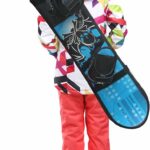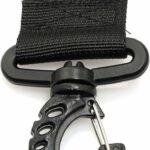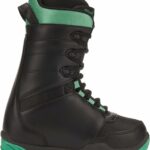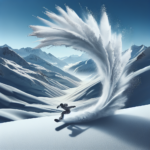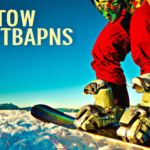You’re standing there with a snowboard, aren’t you? Puzzled, scratching your head because you’re unable to tell which side is the front. Well, this article is for you. Inside, you will discover the unique features that distinguish the front from the back of a snowboard. More than that, you will learn why it’s crucial to know this before you strap on your boots and hit the slopes. Don’t keep the mountains waiting, let’s overcome this hurdle together.
Understanding Snowboarding Basics
Snowboarding is an exhilarating sport brimming with gravity-defying tricks, fast descents, and breathtaking mountain scenery. But before you can join the rush, it’s crucial to understand the basics – like knowing which end of your snowboard is the front.
Importance of knowing your snowboard
Knowing your snowboard is a crucial aspect in enjoying this winter sport. Like how you’d familiarize yourself with a new vehicle, understanding the parts of your snowboard and their functions enhances your control and performance on the slopes. It will also drastically reduce your chances of injury, as you can navigate the board properly.
Before we dig into the details of your snowboard’s front and back, let’s first introduce some basic snowboarding terminology. ‘Nose’ refers to the front end of a snowboard, whereas the ‘tail’ is the back end. ‘Bindings’ are the components your boots attach to. ‘Stance’ is the way you position yourself on the board, and ‘flex’ relates to how flexible, or inflexible, a board is.
The concept of ‘nose’ and ‘tail’ in a snowboard
In snowboarding world, the nose and tail play a significant role in your ride. The ‘nose’ of a snowboard is the tip end that points forward when you’re heading downhill. On the other hand, the ‘tail’ is the section at the rear, which trails behind you as you descend.
Snowboard Design and Construction
Snowboards are marvels of design and construction that have been fine-tuned over the years to enhance performance on snowy slopes.
Physical design of snowboards
Physically, most snowboards have a symmetrical shape with a slightly wider nose area than the tail. They’re designed to cruise with the nose first, that’s why the bindings are usually set back toward the tail.
Material selection in snowboards
Snowboards are made of various materials, including wood, plastic, fiberglass, and metal. Each material is chosen for its specific properties like flex, strength, and weight to strike a balance in offering the best performance on the slopes.
Influence of design and material on the front of the snowboard
Design and material don’t determine the front of a snowboard themselves. However, they influence the board’s flex pattern, overall shape, and binding placements that indicate the front end.
How to Determine the Front of Your Snowboard
Finding the front of your snowboard is a critical step before embarking on a ride.
Looking at the shape of your snowboard
Your first clue in determining the snowboard’s front is its shape. Typically, the nose will be slightly longer and wider than the tail, making for a better flow in fresh powder snow.
Checking the snowboard’s flex pattern
Next, check your snowboard’s flex pattern. The board’s nose is designed with a more flexible tip to absorb shocks better, while the tail end has a stiffer flex for improved stability and control.
Observing the stance of the snowboard
Bindings tell a lot about the snowboard’s stance. Usually, they are set back closer to the tail, meaning the longer section from the bindings is the nose, hence the front.
Role of Snowboard Nose
The nose, or the front part of a snowboard, is more than just a label. It performs functions that significantly influence your snowboarding experience.
Function and purpose of the snowboard nose
The primary function of a snowboard’s nose is to help in directing your path as you glide down the snow. It’s designed wider and longer to maintain float in deep snow and to ensure smoother rides.
How the nose influences snowboarding performance
The nose affects how you handle and maneuver the snowboard. A well-designed nose helps with speed, turning, and handling different snow conditions thanks to its flex pattern and size.
Nose end as the front of the snowboard
Despite the board’s symmetrical appearance, the nose end is recognized as the front of the snowboard. It leads in the direction of travel, making it your guide down the slopes.
Significance of Snowboard Tail
Just like the nose, the tail of the board also plays an essential role in controlling your rides.
Role of the tail in snowboarding
The tail of a snowboard is primarily responsible for tracking and stability. It’s slightly narrower and stiffer, properties that assist in ensuring a straight path and maintaining balance while snowboarding.
How the tail impacts speed and control
While the tail of the board does not directly control speed, a stiffer tail gives more push out of turns which can increase your speed. Its shape and flex pattern maximize control, especially when making turns.
Not considering the tail as the front of the snowboard
Despite its critical role, the tail is not considered the front of the snowboard. It’s designed to follow the nose and assist in handling the board, not to lead the way.
Stance and Direction in Snowboarding
Understanding stance and direction is a crucial part of snowboarding basics. They play a significant role in determining the front of a snowboard.
Understanding ‘Regular’ and ‘Goofy’ stances
In snowboarding, we have two types of stance – ‘Regular’, where the left foot leads, and ‘Goofy’, where the right foot does. Your stance doesn’t influence which side is the front of a snowboard, but it is an aspect to consider while positioning bindings.
Changing directions in snowboarding
Experienced snowboarders often perform ‘switch riding’, where they temporarily change their leading foot. Nonetheless, this doesn’t deter the fact that the nose remains the front end of the board.
How stance and direction determine the front of a snowboard
In simple terms, the direction you face when you stand on your board dictates the front of the board. The board’s front corresponds with your chest and the direction you’re moving in.
Role of Snowboard Bindings
Bindings are essential components of a snowboard setup because they connect you to the board.
Understanding the function of snowboard bindings
Snowboard bindings serve to anchor your boots firmly to the board. They vast enhance your control over the snowboard, transmitting your body movements to the board.
Position of bindings on the snowboard
Typically, bindings are offset towards the tail of a snowboard, leaving more board length at the front than the back. This placement leaves the longer part as the front (the nose) of the snowboard.
How bindings indicate the front of the snowboard
By looking at where the bindings are set, you can tell the front and back of a snowboard. The part of the board with bindings closer to it is the tail (back), and the section with more area extending beyond the bindings is the nose (front).
Different Types of Snowboards and Their Fronts
Variety is the spice of life, and snowboards are no exceptions. Different types of boards are tailored to various riding styles, conditions, and personal preferences.
Characteristics of different types of snowboards
Various types of snowboards, such as freestyle, freeride, all-mountain, and alpine boards, have different shapes, flex patterns, sizes, and construction. These vary in their nose and tail design, but the basic idea remains – nose is the front, and tail is the back.
How different snowboard types determine their fronts
No matter the type of a snowboard, the front is determined by the combination of design, bindings placement, shape, and flex patterns. Some boards may be ‘twin-tip’ with identical or nearly identical nose and tail design, but the front is still determined by the placement of bindings and stance.
Unique aspects of each snowboard type’s front
Each type of snowboard has unique aspects to its front design. For instance, freeride boards often have a larger and wider nose to improve float in deep snow. However, the fundamental rule that ‘nose equals front’ stays consistent across all types.
Common Mistakes in Identifying the Snowboard Front
Even with the best of intentions, there can be roadblocks in understanding which side is the front of a snowboard.
Misunderstanding the role of the nose and tail
A common misconception is believing that snowboards are totally symmetrical, and it doesn’t matter which end leads. This misinterpretation can affect performance and safety.
Incorrect assessment of board shape or bindings
Some snowboard neophytes might struggle with distinguishing the subtle variations in nose and tail shape or interpreting the binding setup. Such errors can cause an incorrect identification of the snowboard’s front.
How to avoid these common errors
Becoming familiar with your snowboard design, understanding flex patterns, and studying your binding setup can help steer clear of these common mistakes related to snowboard front identification.
Effects of Incorrectly Identifying the Snowboard Front
Misapprehensions about which side is front of your snowboard can lead to unfavorable consequences.
Impact on snowboarding technique and control
Riding your board backwards interferes with the board’s performance. Efficiencies in speed, maneuverability, and control can be disrupted when the tail replaces the nose as the dominant guide.
Safety risks of using the wrong snowboard end as front
The risks extend to safety too. Unstable control of the board because of backward riding can increase the chance of falls and injuries.
Long-term effects on learning and mastering snowboarding
Lastly, consistently riding a snowboard with the wrong end leading can impede learning and mastering proper snowboarding techniques. It may prevent you from full enjoying the sport and hinder your progress.
In conclusion, knowing the front of your snowboard is a fundamental yet influential aspect of snowboarding. Recognize the distinct roles of the nose and tail, understand the importance of the board’s physical design and construction, and respect your stance and direction. This knowledge empowers you to ride safely, improve your skills, and ultimately, have more fun on the slopes. Happy snowboarding!
- What Snowboard Bindings Should I Get? - January 23, 2024
- What Size Screws For Snowboard Bindings? - January 23, 2024
- How To Snowmobile On Water? - January 23, 2024


